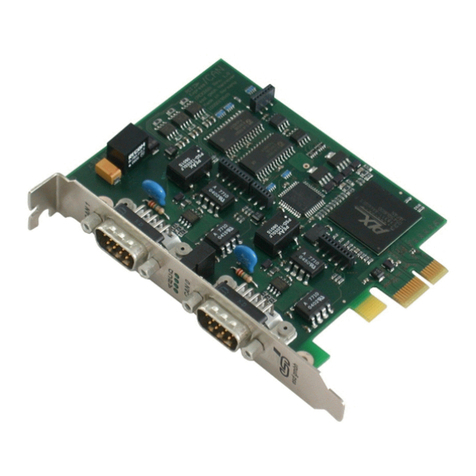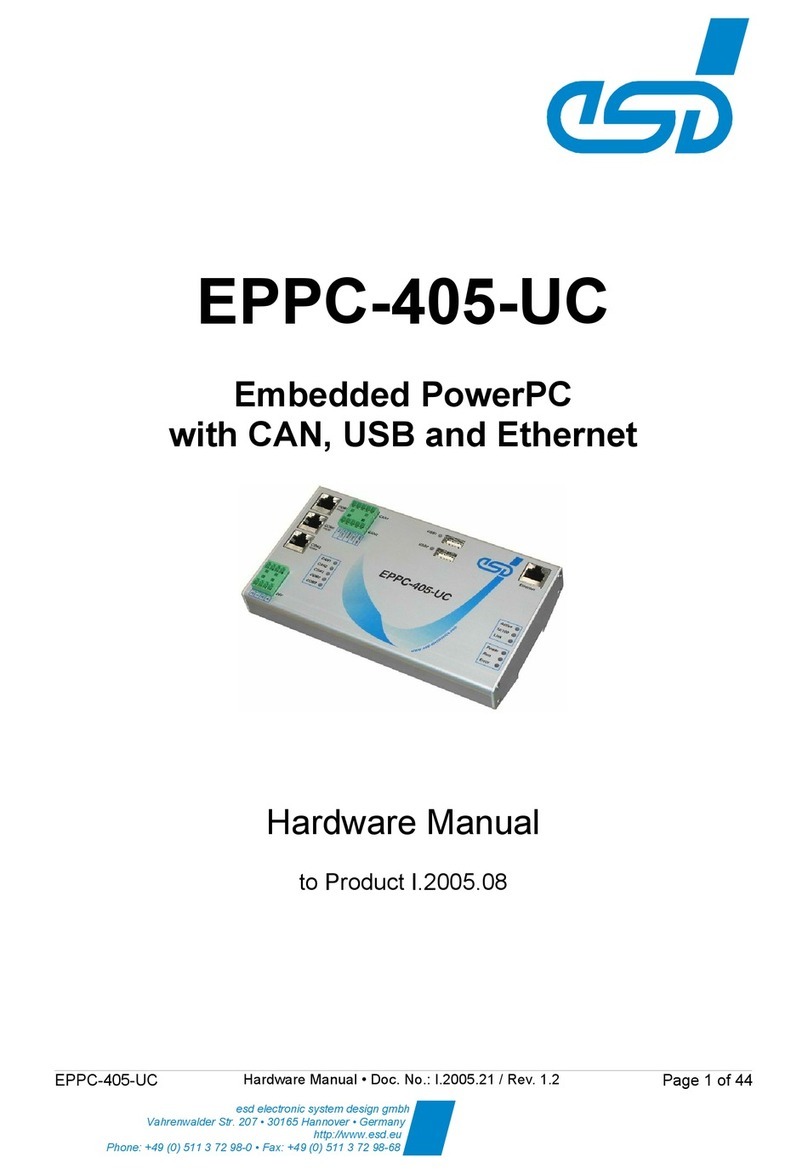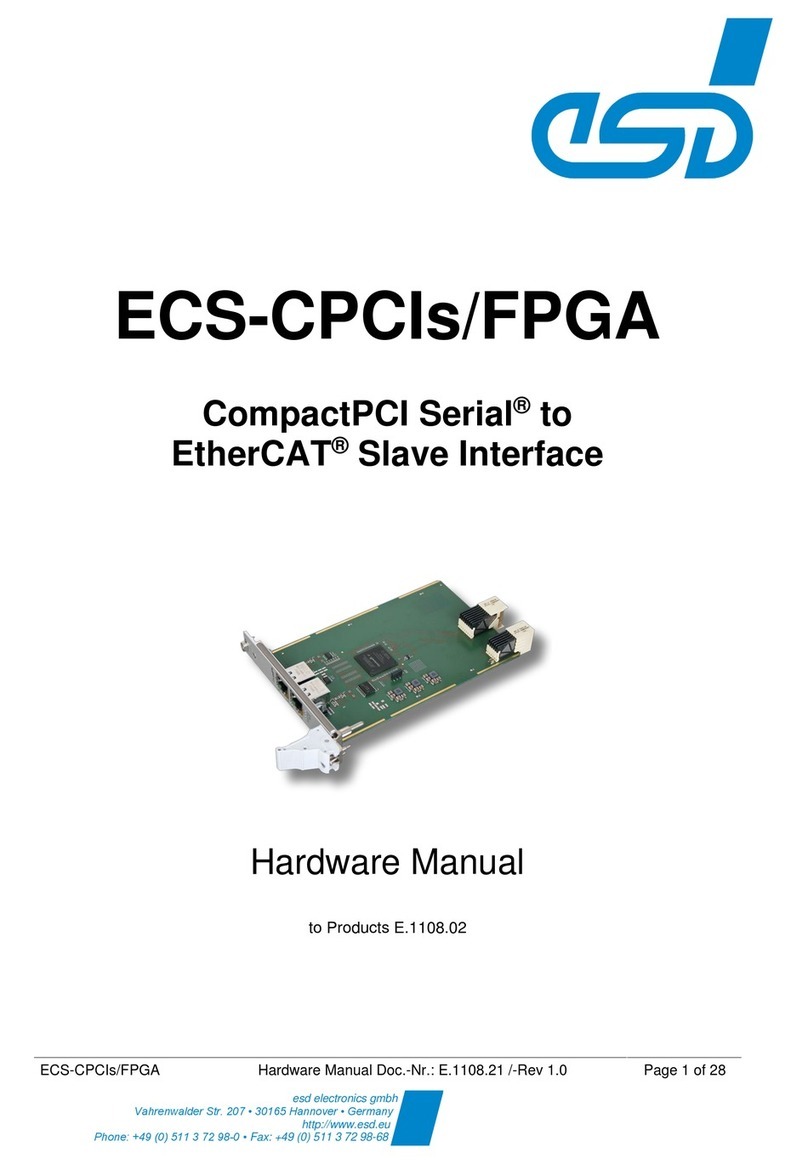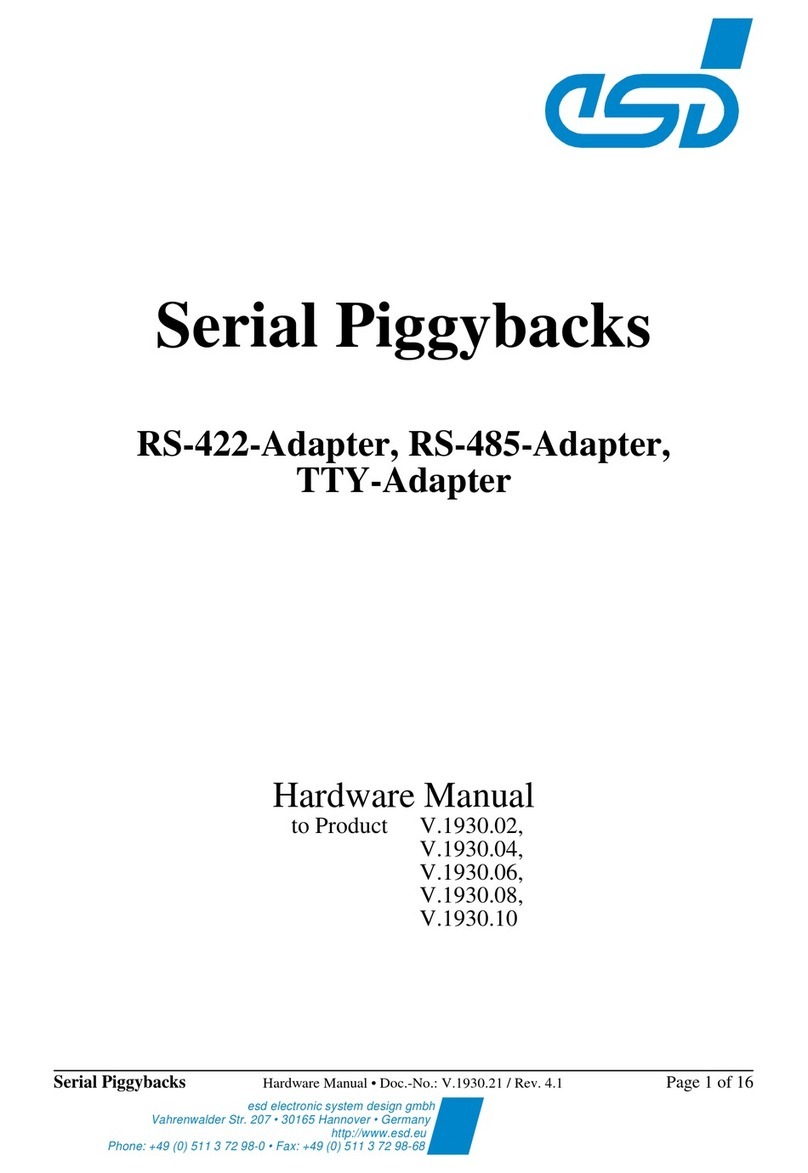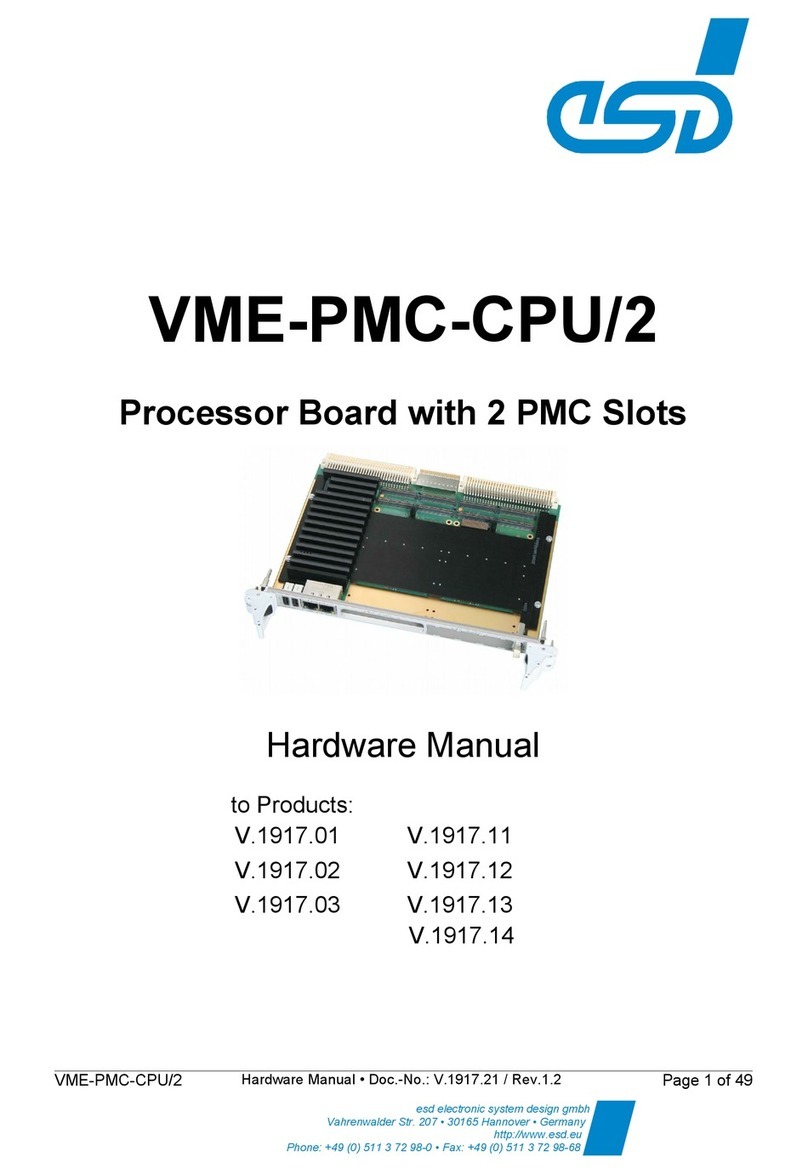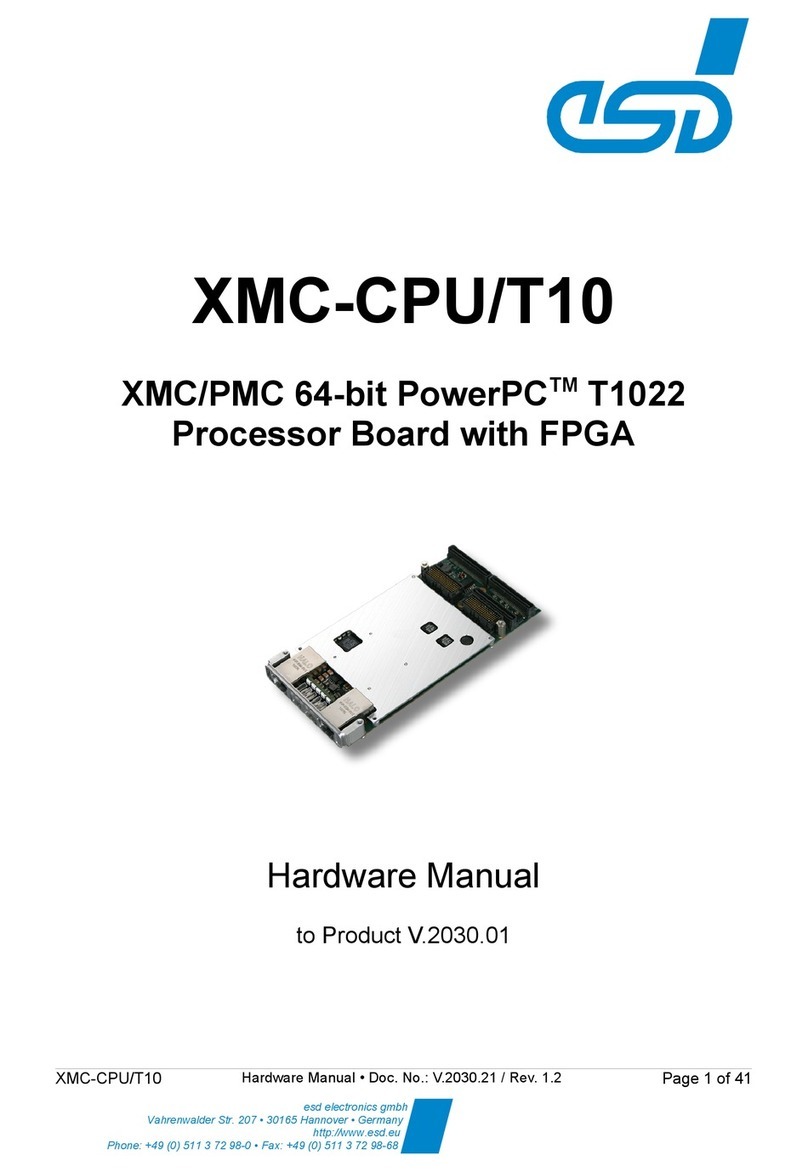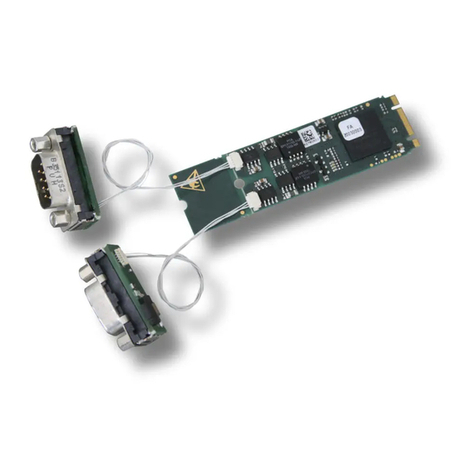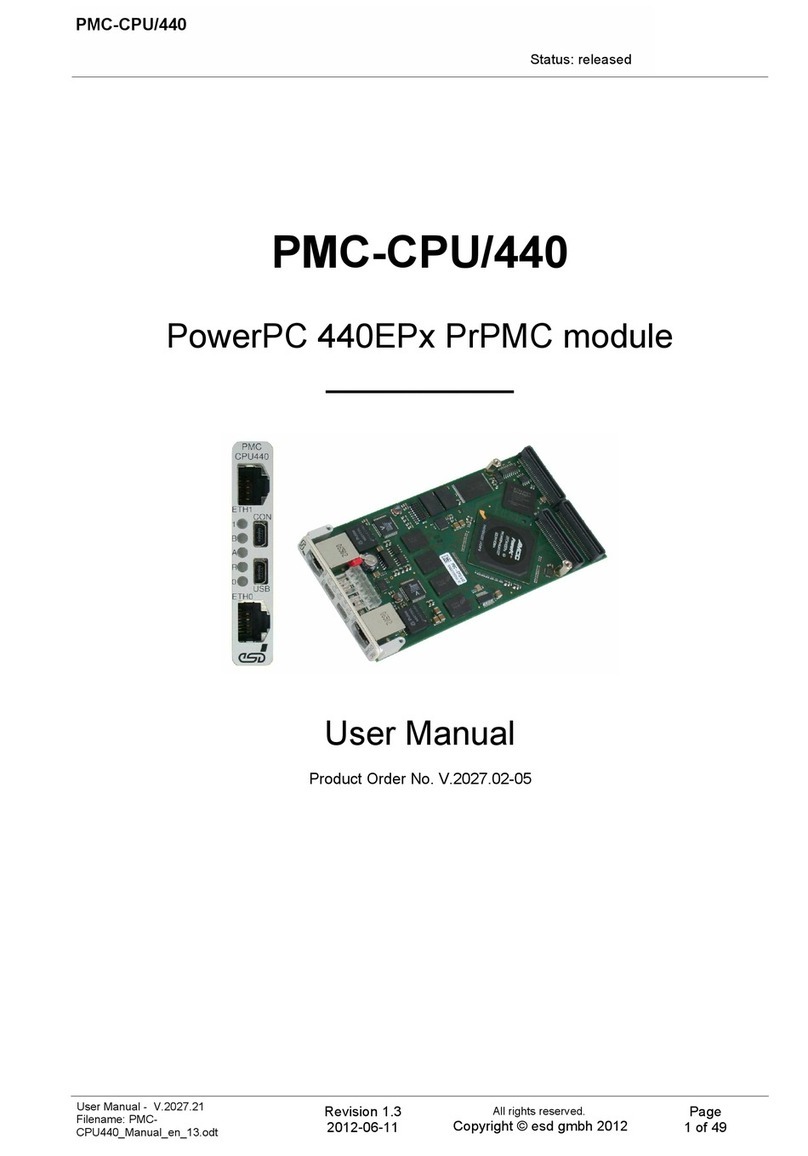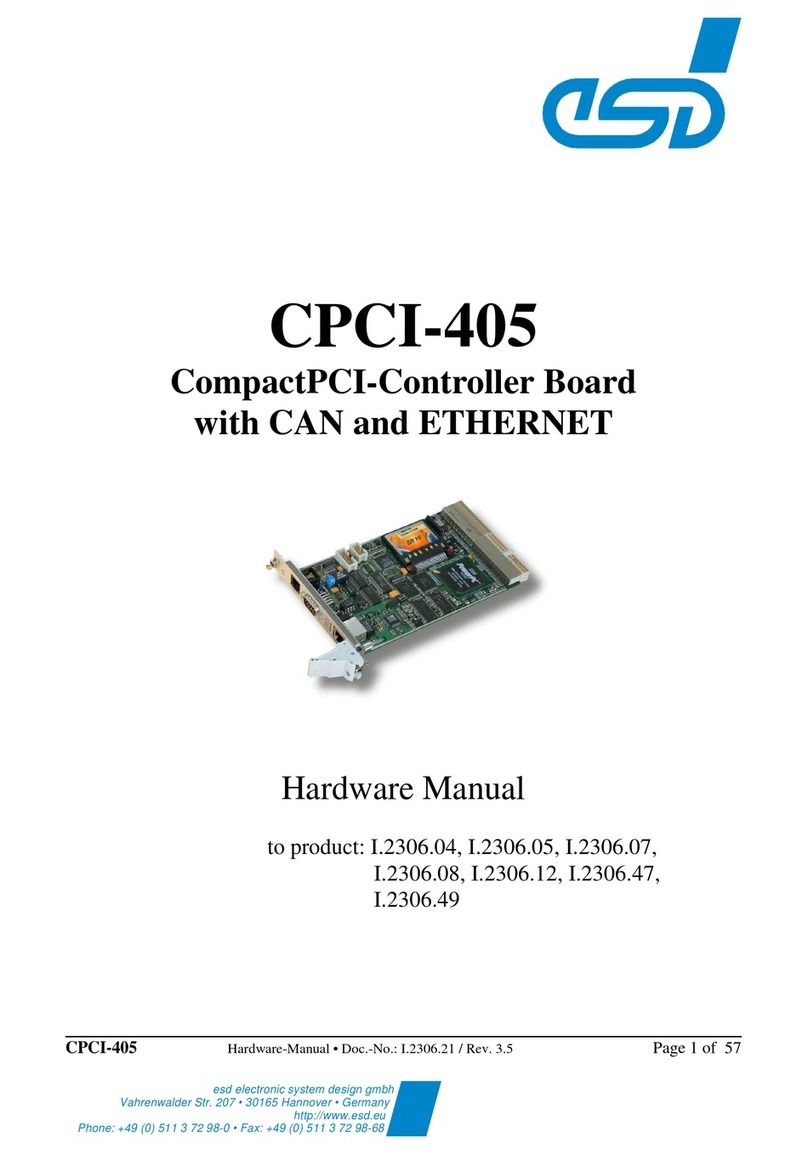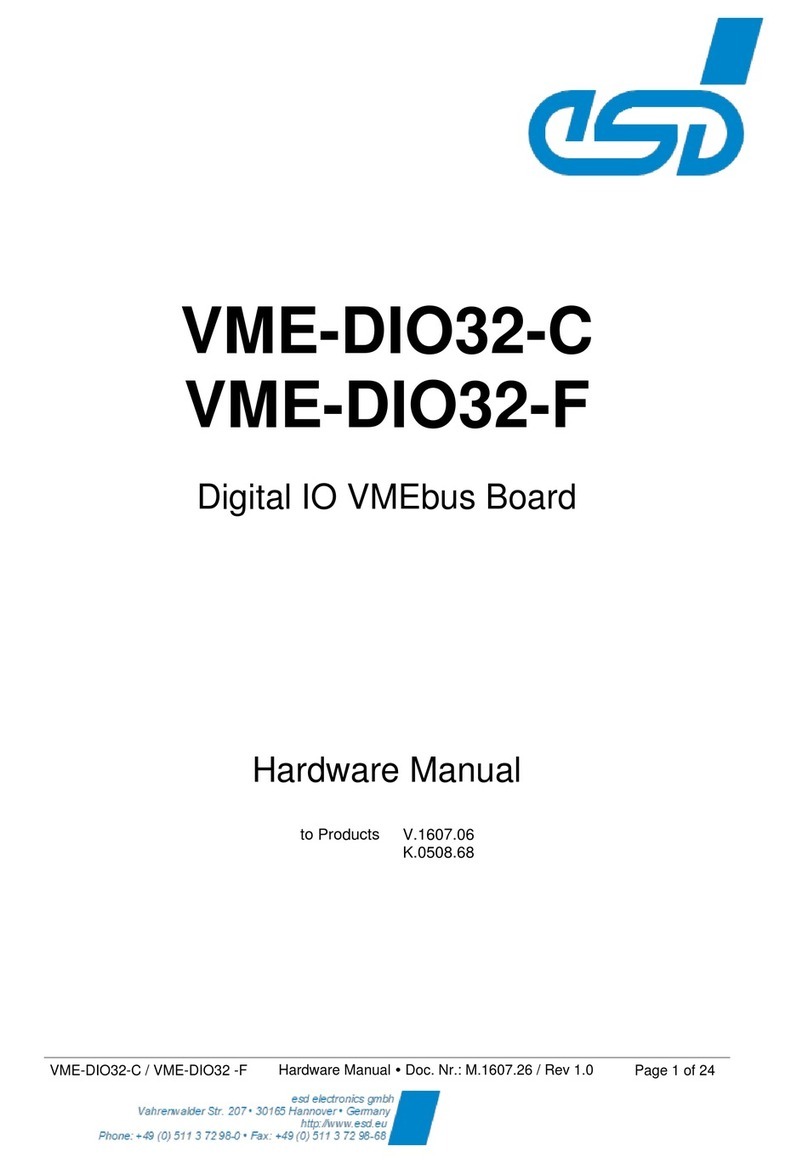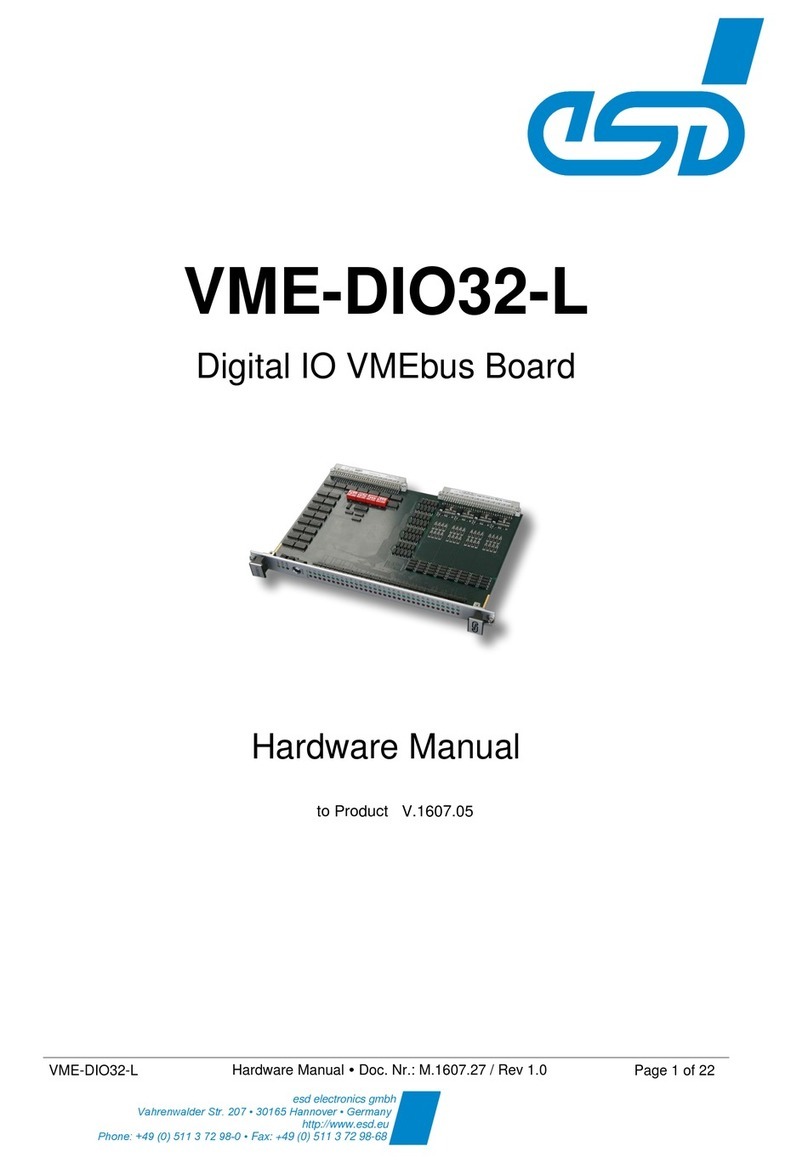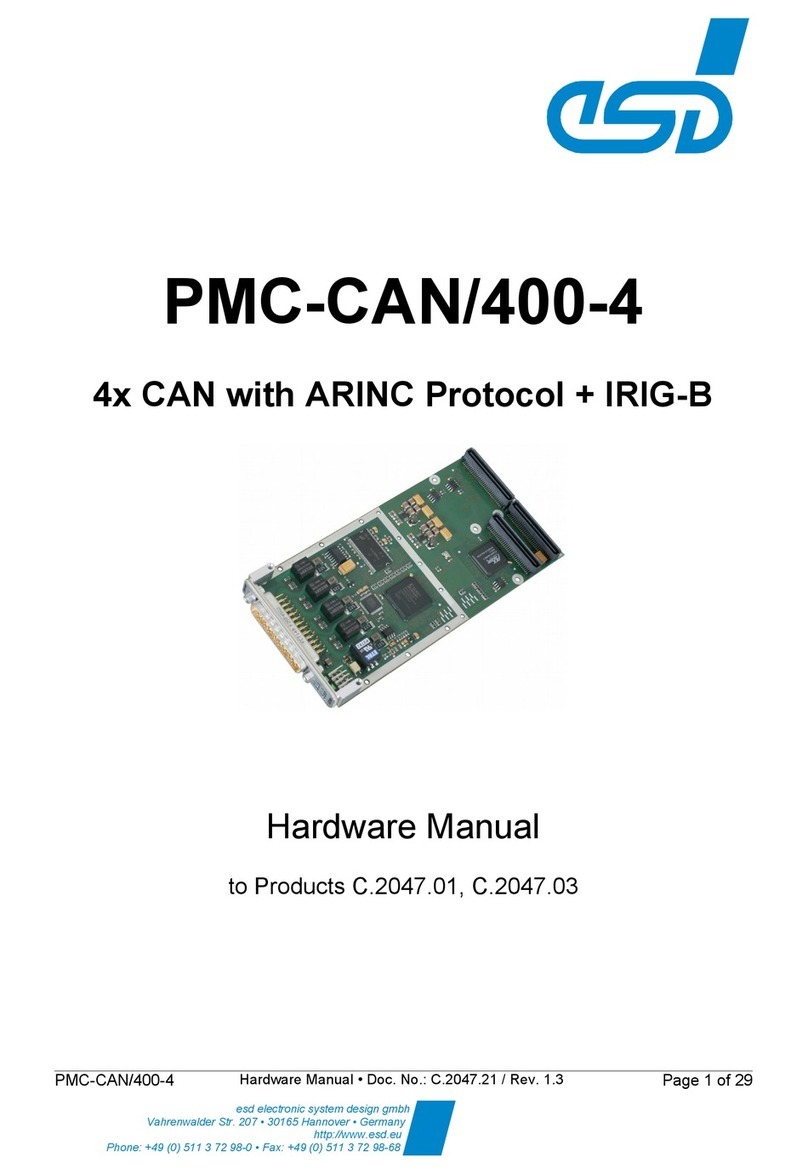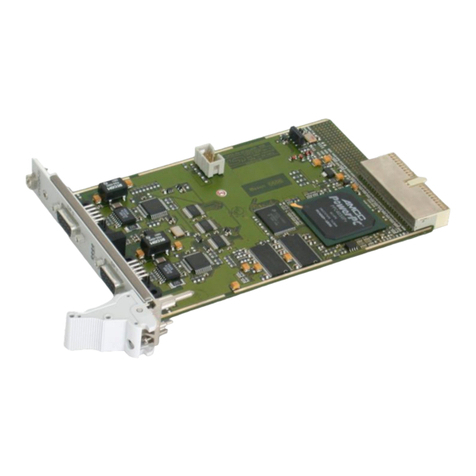Table of ontents
Safety Instructions...........................................................................................................................5
1. Overview......................................................................................................................................8
2. PCB View with Connectors and LE s..........................................................................................9
2.1 LE isplay ..........................................................................................................................9
3. Connector Assignment...............................................................................................................10
3.1 CAN Connector....................................................................................................................10
4. Adapter CAN-PCIeMini/402- SUB9 and Adapter Cable.............................................................11
4.1 Adapter View........................................................................................................................11
4.2 CAN Termination Jumper.....................................................................................................11
4.3 Connector Assignment of Adapter.......................................................................................12
4.3.1 CAN via SUB9..........................................................................................................12
4.3.2 CAN Cable Connector.................................................................................................12
4.4 Adapter cable.......................................................................................................................12
5. Hardware Installation..................................................................................................................13
6. Technical ata............................................................................................................................15
6.1 General Technical ata........................................................................................................15
6.2 Memory................................................................................................................................15
6.3 PCI Express Mini Interface...................................................................................................15
6.4 CAN Interface......................................................................................................................16
6.5 CAN-PCIeMini/402- SUB9 Adapter....................................................................................16
6.6 Software Support.................................................................................................................17
6.6.1 CAN-PCIeMini/402-2...................................................................................................17
6.6.2 CAN-PCIeMini/402-2-F .............................................................................................17
7. Correct Wiring of Electrically Isolated CAN Networks.................................................................18
7.1 Standards concerning CAN Wiring......................................................................................18
7.2 Light Industrial Environment (Single Twisted Pair Cable).....................................................19
7.2.1 General Rules.............................................................................................................19
7.2.2 Cabling........................................................................................................................20
7.2.3 Branching....................................................................................................................20
7.2.4 Termination..................................................................................................................20
7.3 Heavy Industrial Environment ( ouble Twisted Pair Cable).................................................21
7.3.1 General Rules.............................................................................................................21
7.3.2 evice Cabling............................................................................................................22
7.3.3 Branching....................................................................................................................22
7.3.4 Termination..................................................................................................................22
7.4 Electrical Grounding.............................................................................................................23
7.5 Bus Length...........................................................................................................................23
7.6 Examples for CAN Cables...................................................................................................24
7.6.1 Cable for light industrial Environment Applications (Two-Wire)....................................24
7.6.2 Cable for heavy industrial Environment Applications (Four-Wire)................................24
8. CAN Troubleshooting Guide.......................................................................................................25
8.1 Termination..........................................................................................................................25
8.2 Electrical Grounding.............................................................................................................26
8.3 Short Circuit in CAN Wiring..................................................................................................26
8.4 CAN_H/CAN_L-Voltage ......................................................................................................26
8.5 CAN Transceiver Resistance Test........................................................................................27
8.6 Support by esd.....................................................................................................................27
9. eclaration of Conformity...........................................................................................................28
10. Order Information.....................................................................................................................29
10.1 Hardware...........................................................................................................................29
10.2 Software for CAN-PCIeMini/402-2.....................................................................................29
10.3 Software for CAN-PCIeMini/402-2-F ...............................................................................30
10.4 Manuals.............................................................................................................................30
CAN-PCIeMini/402-2(-F ) Hardware Manual • oc. No.: C.2044.21/ Rev. 1.1 Page 7 of 30
